In the current digital ecosystem, well-constructed web pages are key to enhancing user experiences and fostering lead generation. But before we dive into the pillar page vs landing page dialogue, one question remains:
Are you utilizing your pages effectively to meet the rising standards of your discerning users?
Witness the online world rapidly constricting its organic realms, where creating tailored user interactions is more critical than ever in guiding your content to its intended audience and attracting new visitors.
With algorithms evolving to address user inquiries and intent better, understanding the relevance of the pillar page vs landing page debate has become crucial.
However, this constant tug-of-war shouldn’t confuse you. Instead, you can fully grasp how to harness both pillar page and landing page strategies. This post will shed light on these vital marketing components to help you establish a robust strategy that leverages the strengths of both.
The concept of a landing page was first introduced in 2003, born out of Microsoft’s strategy to boost online sales of their primary product: Office.
Dave Chaffey – a co-founder of Smart Insights and one of the gurus known for driving change in marketing – articulated the idea of landing pages as “Specific page(s) on a website created for visitors referred from marketing campaigns, which are designed to achieve a marketing outcome.”
From there, landing pages morphed into a fundamental element of online advertising, providing concise, compelling messages to convert visitors into leads or customers.
Meanwhile, the value of delivering substantial and worthwhile content led to the invention of pillar pages in 2013. The term was coined by Rand Fishkin, the founder of SEO goliath Moz. His vision was of a single page acting as a base for related content, aligning with the growing stress on offering value and establishing niche authority.
Varied best practices emerged from different marketing experts over time, leaving the digital marketing landscape widely divided. Different industries witnessed varying successes, with some favoring content-packed pillar pages and others preferring high-converting landing pages.
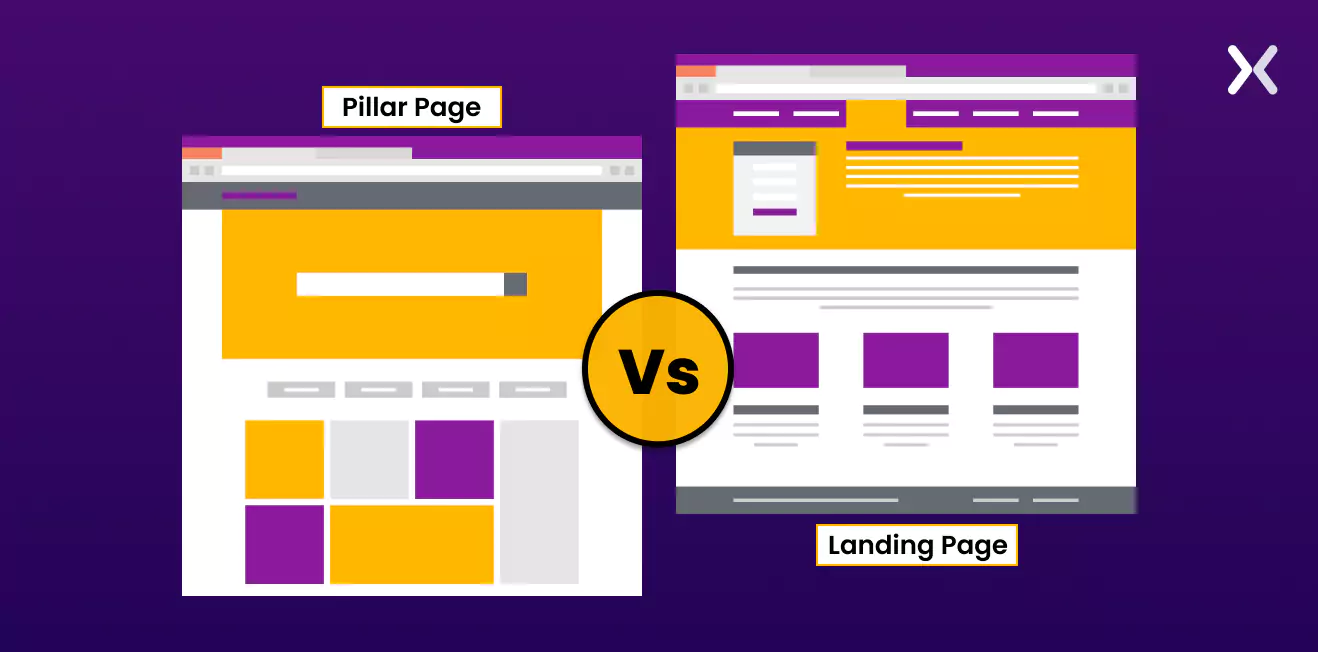
Definitely not. Despite both being vital for content marketing, pillar pages and landing pages hold distinct roles. What you can do to distinguish between the two is to understand their definitions.
A pillar page is a comprehensive web page that thoroughly explores a central theme while providing links to related subtopics, such as blog posts and instructional articles. This strategic approach provides depth and valuable information while offering clear navigation to related content.
Consider, for instance, a SaaS company specializing in content marketing tools. It might develop a pillar page titled “Mastering Content Marketing,” offering a detailed guide to various content marketing strategies.
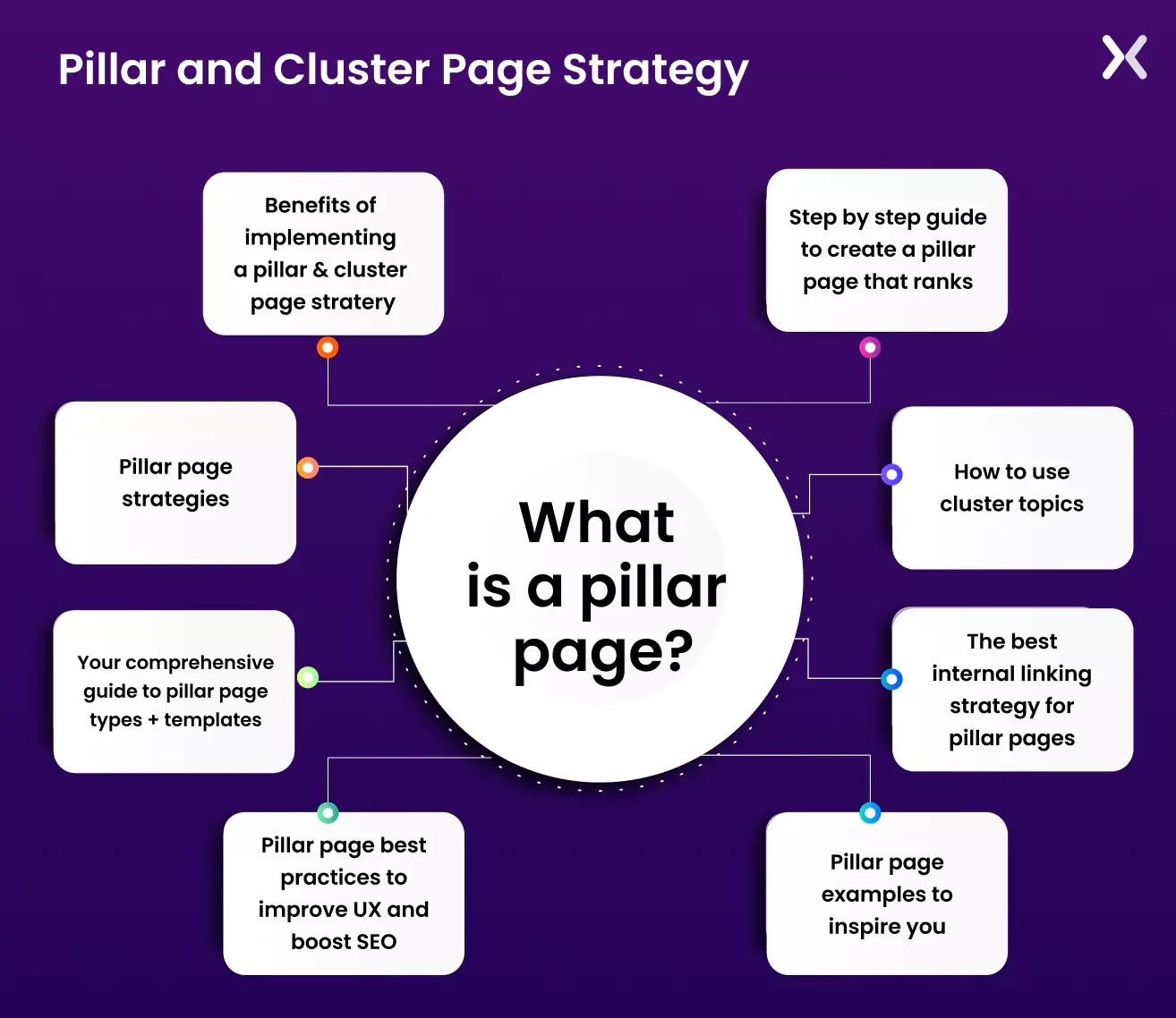
Each segment could link to specific features or aids within their marketing software. This not only delivers valuable knowledge but also presents the company’s own expertise and highlights its product’s relevance in the context of content marketing.
To illustrate, take this Apexure pillar page as an example. With over 4,000 words, it touches every vital aspect of webinars and links to associated topics:
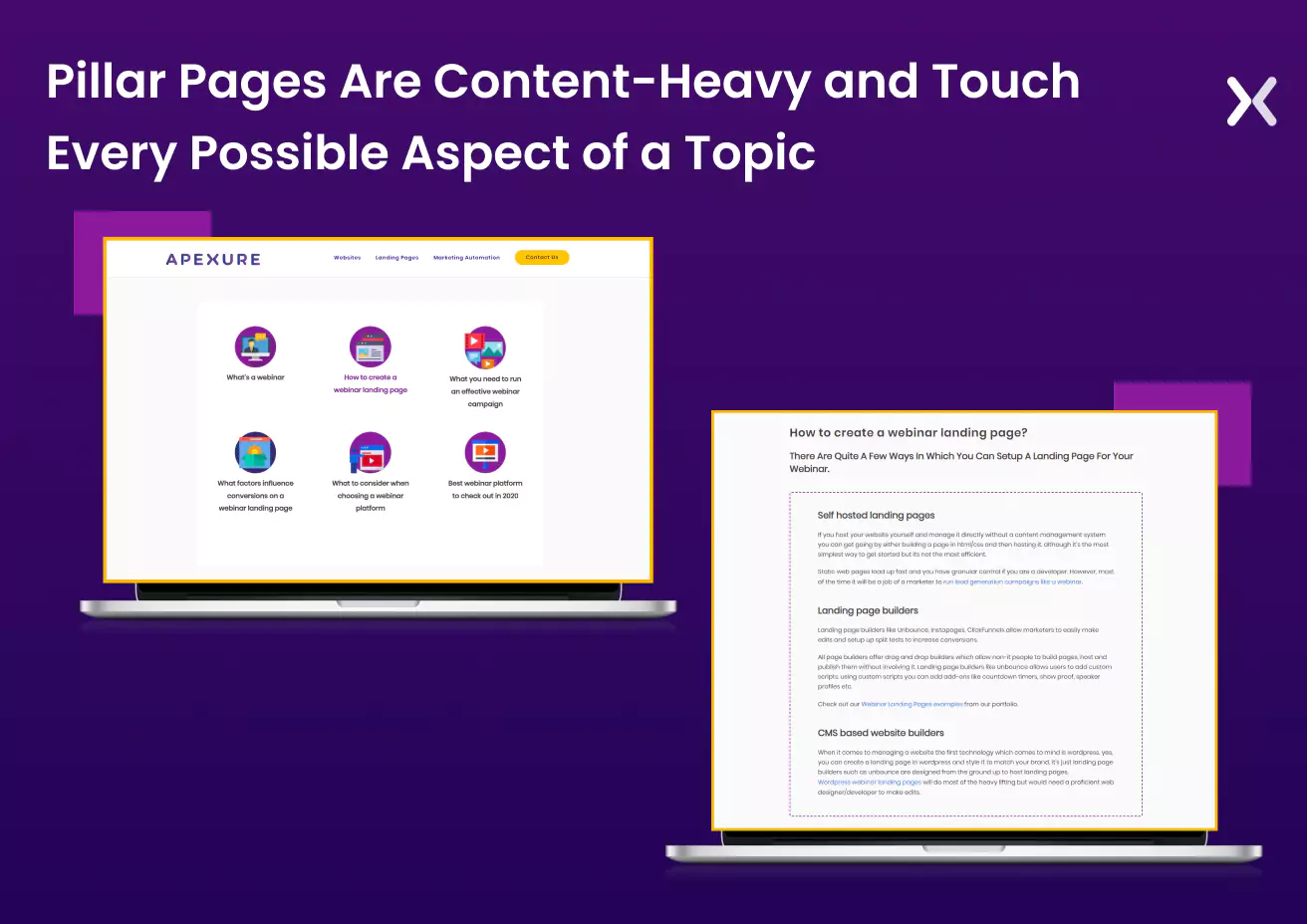
At the beginning of your marketing funnel – this is when prospective customers are in the information-seeking stage. Pillar pages aim to inform, build credibility, and attract organic traffic. In addition, it serves to reinforce a comprehensive content strategy and gathers potential leads for future conversions. Its enduring value is a powerful factor for long-term engagement.
While a pillar page explores a central, informative theme, a landing page is tailored for specific marketing or advertising campaigns. It’s primarily designed to stimulate visitors to perform a distinct action, such as subscribing to a newsletter, accessing a resource, completing a purchase, offering a free trial, showcasing a SaaS product, booking a demo, or submitting a contact form.
Examples of landing pages may include:
A page created to gather leads via a complimentary eBook download in return for an email address.
A promotional page with a distinct “Buy Now” button for time-sensitive discounts.
A registration page for a webinar or event.
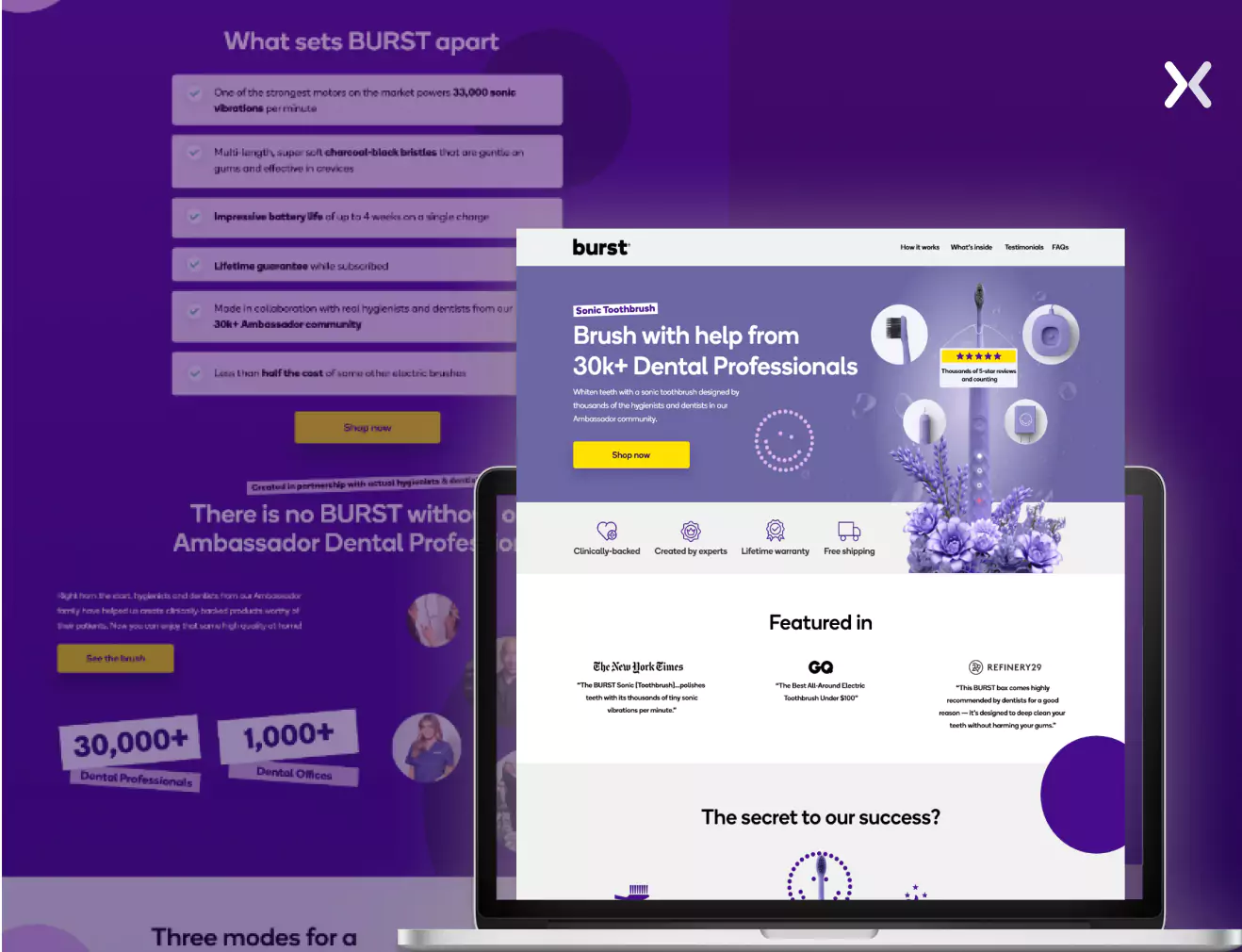
Simply put, they’re crafted to optimize the potential of transforming page visitors into leads, customers, or subscribers. Also, when a visitor converts into a lead through a landing page, they’re directed to a thank you page. See more landing page examples of a landing page from Apexure by visiting our portfolio.
These pages are versatile tools useful throughout the marketing funnel; they introduce your brand, educate and engage, prompt specific activities, and foster existing customer relationships. Also, the adaptability of landing pages qualifies them as crucial at every phase of the customer’s journey.
Now that you know their definitions well, you can better grasp the nuances in the pillar page vs landing page discussion. Here’s how they differ:
Pillar pages are essentially content powerhouses. Acting as a content cluster’s linchpin, they offer in-depth insights on a broad niche-specific topic. Serving as a central hub, they provide readers with an extensive overview and easy access to related subtopics.
The main goal? Establishing authority and offering invaluable insights on a specific subject.
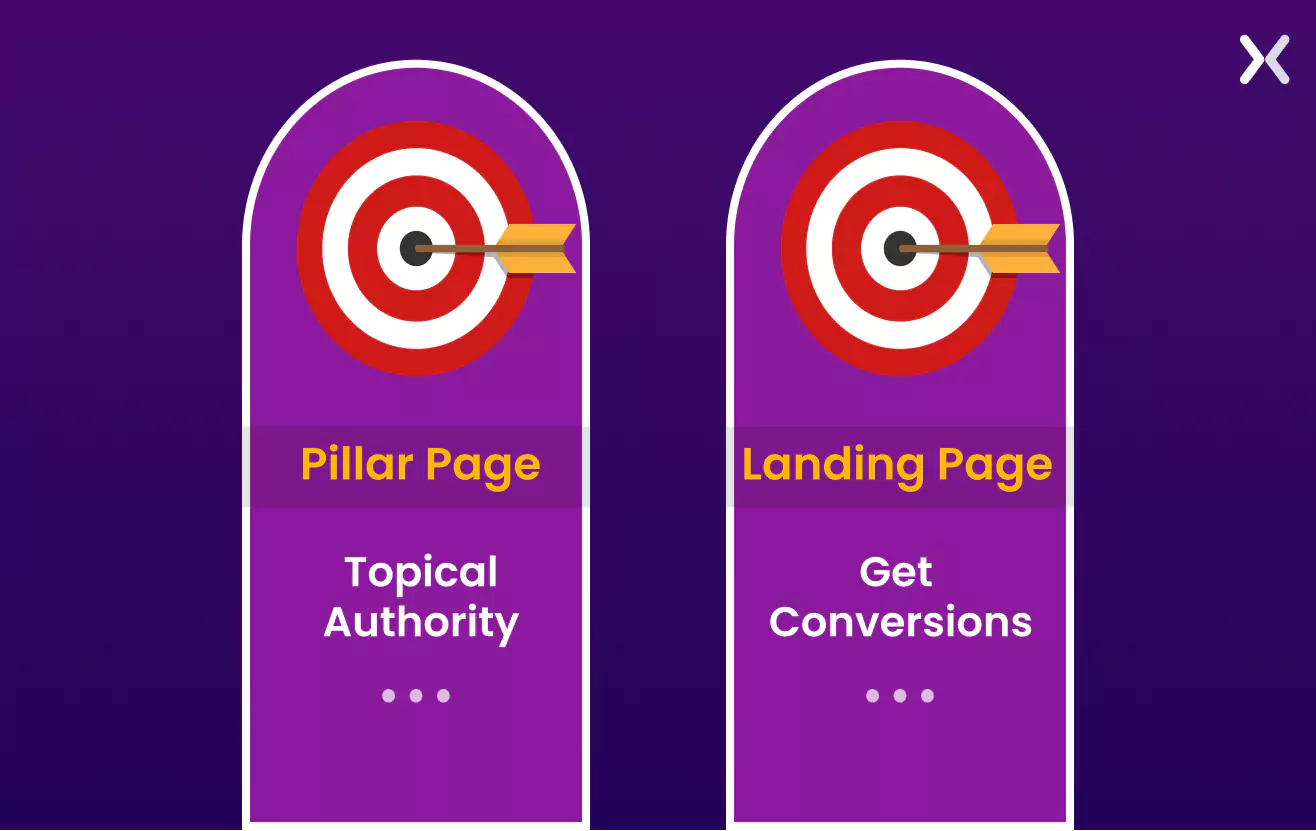
On the flip side, a landing page, birthed from a specific marketing or advertising campaign, serves one chief purpose – to stimulate visitors to perform a specific deed like signing up, purchasing, or resource downloading.
Unlike its pillar page counterpart, a landing page operates with campaign specificity and focuses on achieving a singular conversion goal.

Primarily, pillar pages are cleverly designed for navigational ease, often containing a table of contents to guide visitors through the richness of comprehensive content seamlessly. Doing so encourages deep exploration.
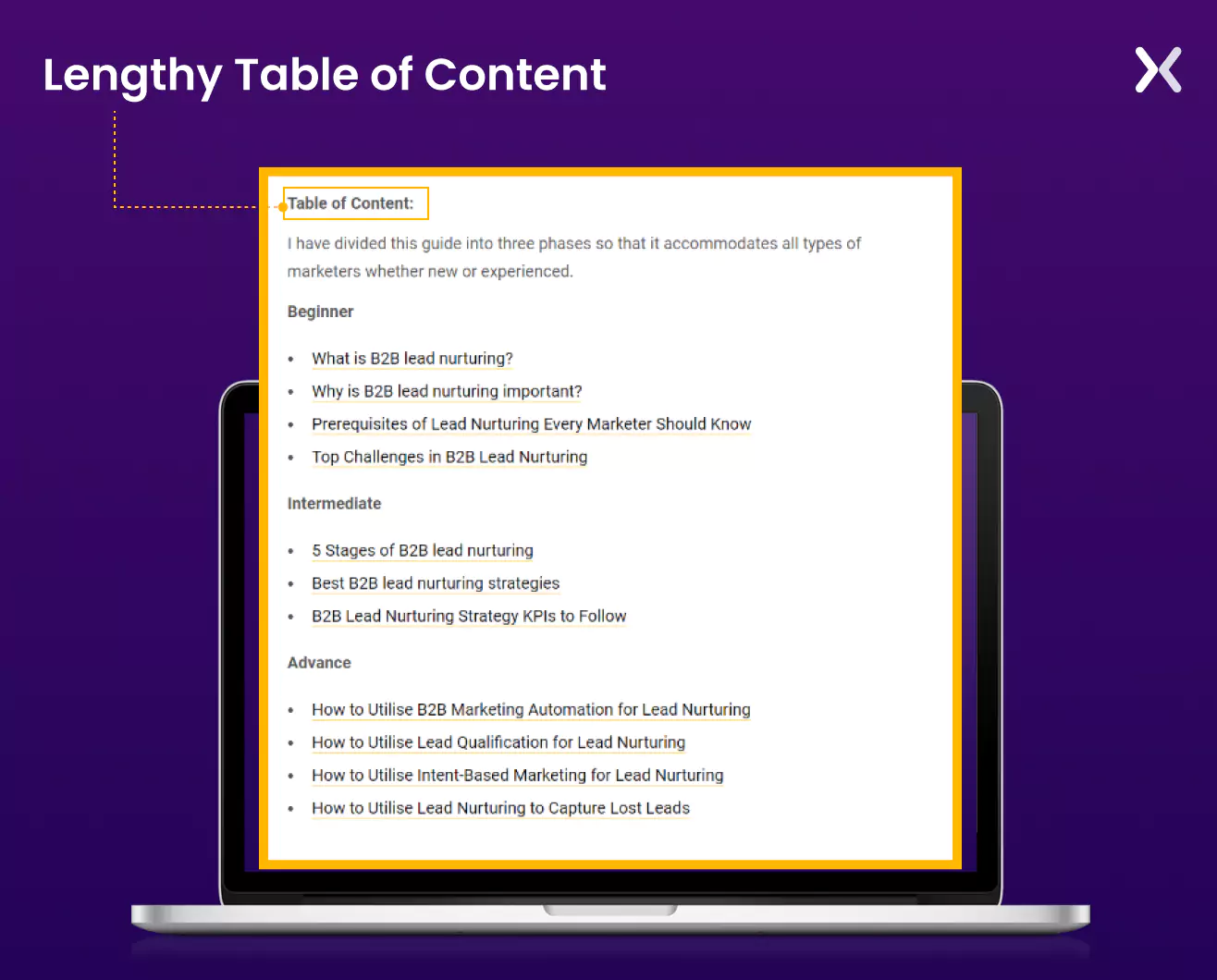
A landing page differs by simplifying a razor-focused design. It minimizes diversions, keeping the visitor’s gaze fixed on the primary call-to-action statement. Holding a singular concentration on the conversion goal, a landing page diverges from the multi-section pillar page by featuring limited navigational elements.
 \
\
\
\
\
\
A pillar page prizes in-depth, authoritative coverage, extensively exploring a spectrum of subtopics related to its central theme.
The goal? To equip readers with a thorough understanding of the chosen topic – this prioritizes educational information, deferring the introduction of any brand or service.
Conversely, a landing page hones in on a particular topic or goal relevant to its supporting campaign. Offering valuable information to buttress the call-to-action, its content maintains a narrow focus. The purpose is to offer enough details to promote the desired visitor action by emphasizing the following:
Unique selling points
Benefits
Features
Social proof
One of the key players in the world of search engine optimization (SEO) is the pillar page. Its comprehensive treatment of a topic draws organic traffic, bolstering site authority. Its detailed content and all-encompassing approach enhance its search engine visibility. Populating the page with relevant internal links amplifies not just the page’s authority but the entire website’s stature as well.
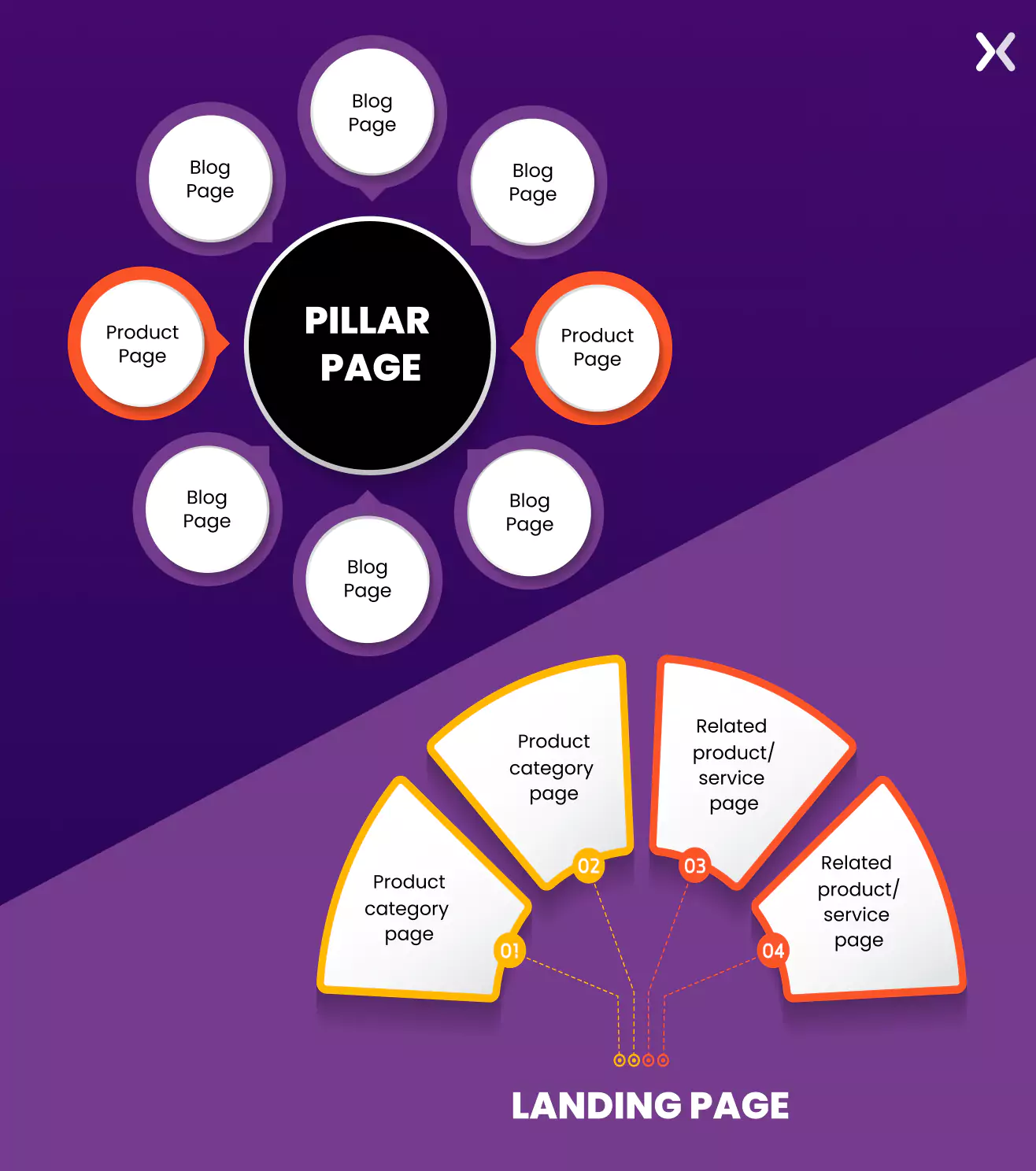
A landing page relies differently on specific keywords or phrases relevant to the campaign it supports, bearing no external links. Despite lacking the pillar page’s content depth, its finely-tuned optimization aligns with the campaign goals, aiming to draw targeted traffic.
The difference lies in the conversion goals and how long they are expected. A pillar page’s primary objective isn’t immediate conversions, which are typically expected over a longer period of several months.
Instead, it zeroes in on delivering valuable information and building authority. While it may feature calls to action, it prioritizes education and information over driving immediate conversions.
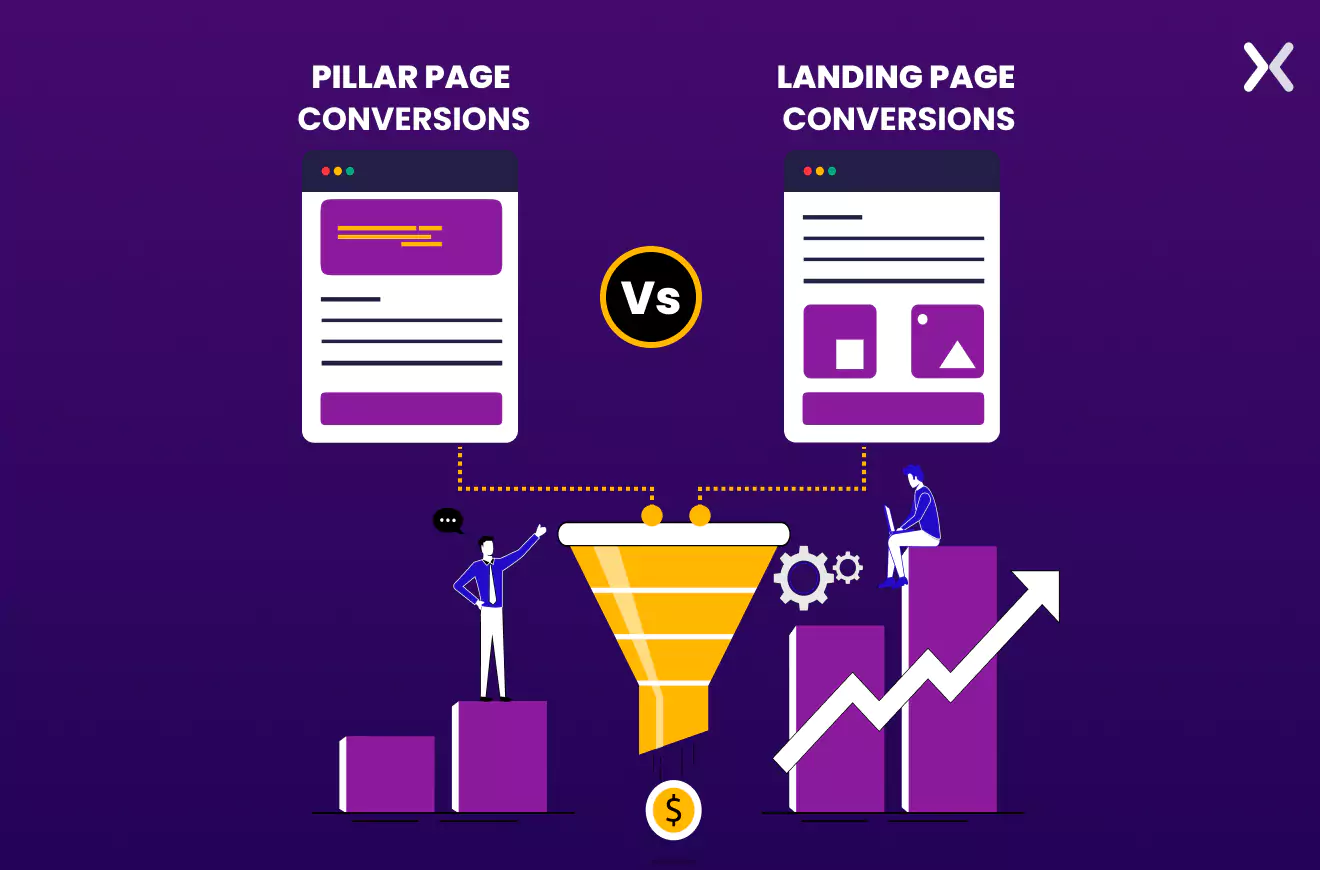
Drawing an opposite picture, a landing page’s design caters explicitly to conversions, with expected results around just a few days to a week.
Prefaced by a clear call-to-action, it’s built to propel visitors towards a particular action, such as newsletter sign-ups, purchases, or resource downloads. Here, success is gauged by its ability to boost conversions associated with a specific campaign.
While integral to effective campaign planning, pillar page and landing page strategies have distinct approaches when it comes to their design and roll-out. Let’s dive into these unique techniques.
A popular strategy for pillar pages is the 10X approach, focusing on creating content tenfold better than any existing piece on a similar topic. This approach is as follows:
Invest significant effort into producing an exceptionally comprehensive resource exceeding competitor offerings.
Prioritize superior information, enhanced visuals, and SEO-friendly pages that cater to both users and search engine algorithms.
Next, craft cluster posts around your pillar topics with a straightforward goal: surpass your competitors and offer your audience unparalleled value.
Once your pillar and cluster posts are crafted, unite them with internal links. This not only highlights your website’s authority on a specific topic but also positively impacts your SEO.
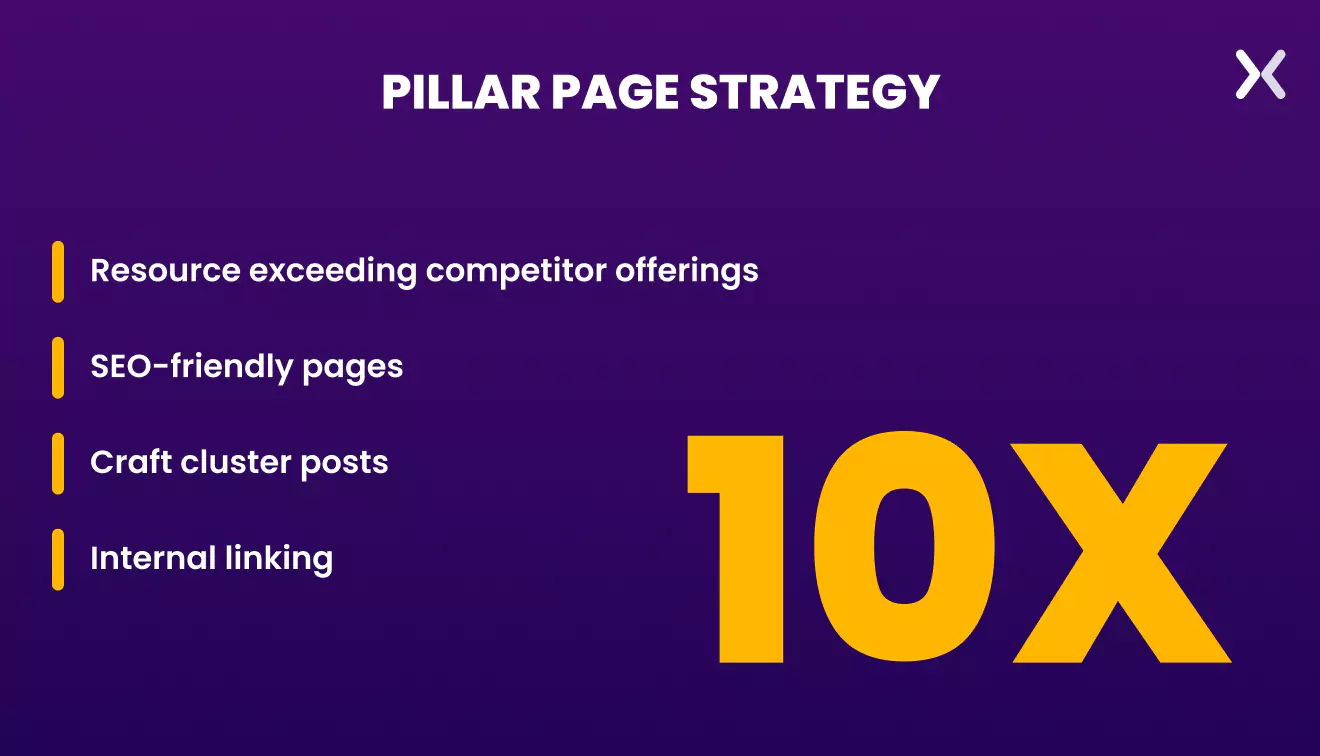
There’s a total of 13 different types of landing pages, each designed for varying stages of the marketing funnel. A structured approach is essential for optimizing these standalone web pages for specific marketing or advertising campaigns, so understanding which one aligns with your campaign needs is crucial.
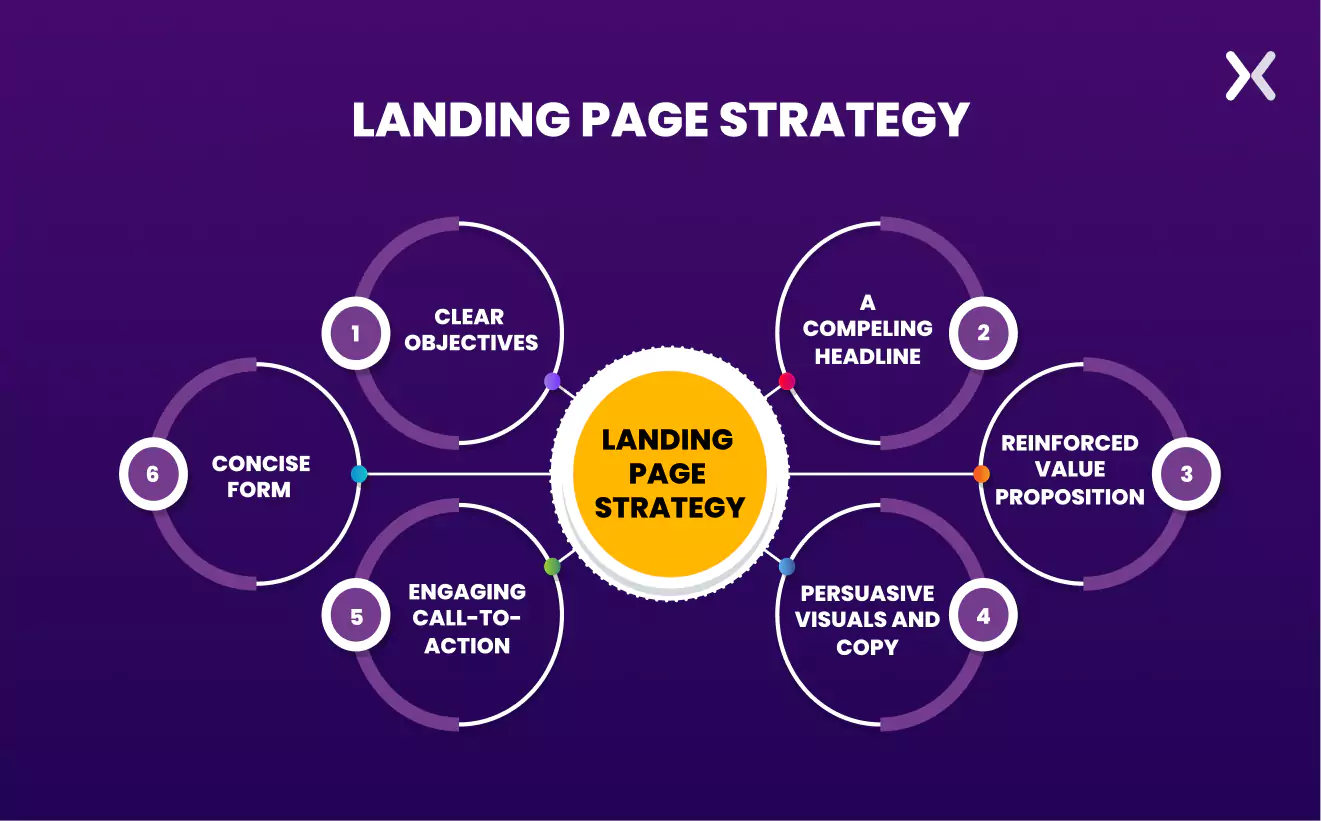
Every landing page should encompass six key elements:
Clear Objectives: The specific goal or action the page urges visitors to take.
A Compelling Headline: The value proposition or action benefit should be presented in a clear, engaging headline.
Reinforced Value Proposition: Present the benefits of the offer or action, detailing the gains made by conversion.
Persuasive Visuals and Copy: Relevant copy, images and videos clarify the offer, its perks, and how it solves visitor’s requirements or issues.
Engaging Call-to-Action: Design a clear, eye-catching CTA button guiding visitors toward the desired action with active language.
Concise Form: Keep your form brief and direct.
Note as well that an essential aspect of landing pages is the minimal internal backlinks, keeping visitors focused on the end goal: Conversion.
That’s why regular testing, monitoring, and optimization are key to gauging if your landing pages are getting the anticipated response from your audience. As landing pages search for conversion events, understanding user trends is vital for optimization and increasing conversion rates.
False. While the landing page vs pillar page debate proves the difference between the two, it doesn’t render one obsolete over the other.
Pillar pages, while delivering exhaustive information on broad topics and solidifying authority, aren’t replacing landing pages. Landing pages, built with a targeted, campaign-specific objective to incite a particular user action, still hold significant value.
They both play unique roles within a content strategy, complementing each other across varied customer journey stages.
To better compare pillar pages and landing pages, the following table offers a quick, easy-to-scan breakdown of their key differences and functionalities:
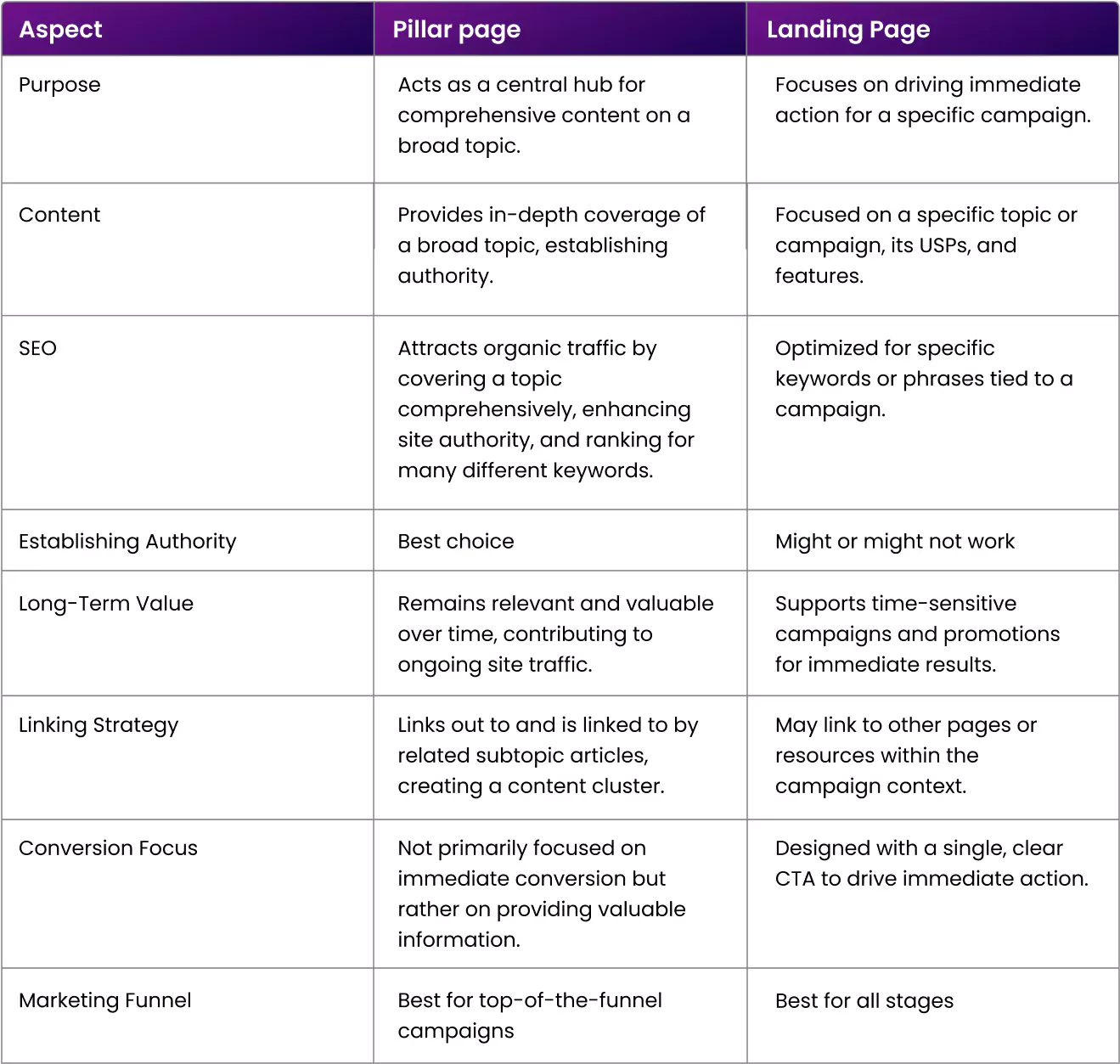
Absolutely, one can effectively harness both pillar pages and landing pages. Pillar pages excel in education and building authority, while landing pages spur immediate action. Contemplate how these page designs resonate with your target demographic and brand representation. With your buyer personas and site visitors in mind, you can evaluate how using both can optimize your impact.
However, the savvy creation of pillar and landing pages often demands professional expertise – this is particularly true for companies that want to focus on improving their services or products.
For pillar pages, experienced SEO guidance is indispensable, while thoughtfully crafted landing pages are more feasible with an accomplished company.
That’s where Apexure comes in.
Offering eight years of specialization in building authoritative pages and compelling landing page creation, Apexure equips you with the expertise necessary for informed marketing decisions. Further, we ensure seamless execution by providing skilled hands. Contact us today, and let’s elevate your marketing game together.
Do you know Apexure has 100+ blog posts on landing pages? We have shared everything, from creation to testing, analysis to optimization. Check it out before you build your landing page.
Making a landing page on your own with just examples can take a lot of time. Get the help you need from our experts. Book a call and one of our experts will contact you soon.
Check out our landing page portfolio to discover conversion-friendly landing page elements that might. Filter your industry and check which landing page design is trending.
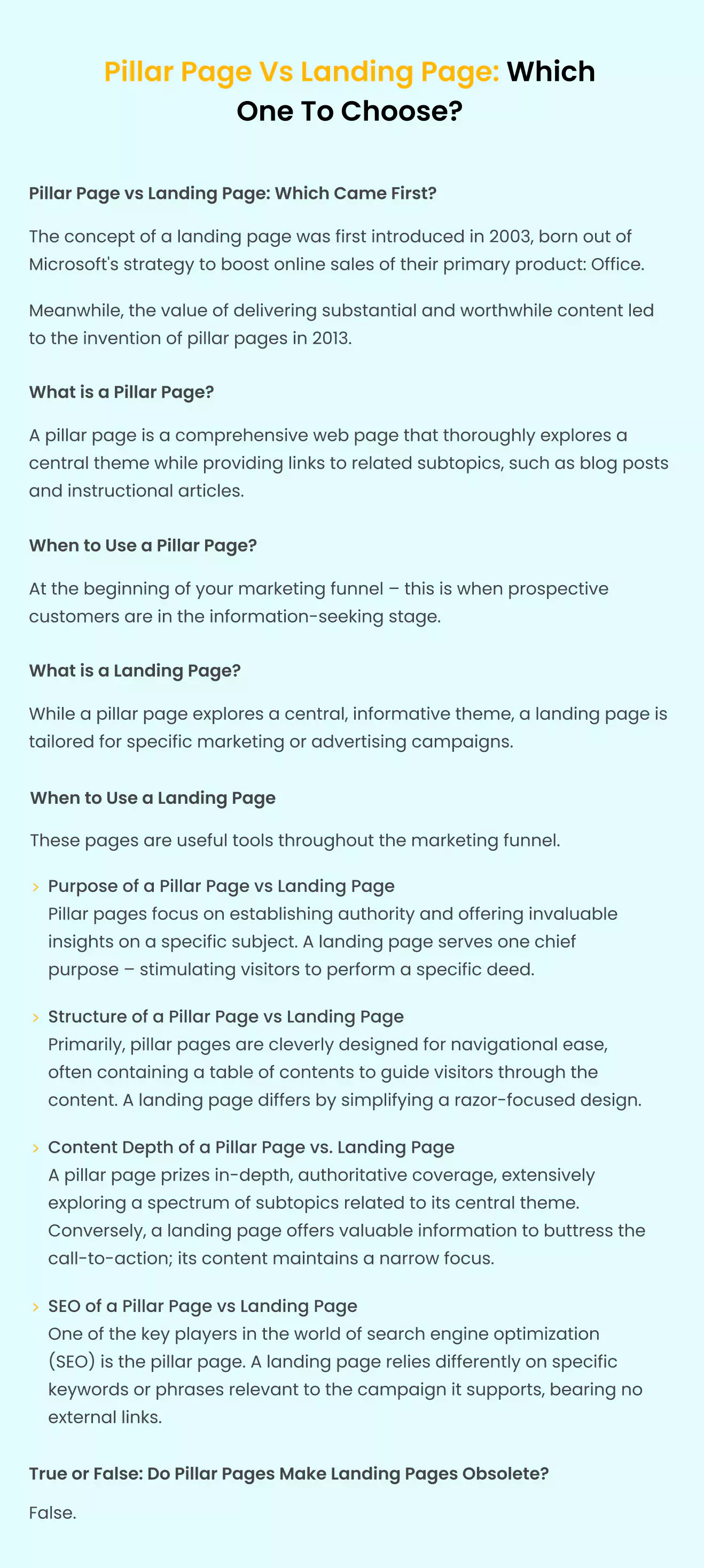
Related Article:
Drive More Sales or Leads With Conversion Focused Websites and Landing Pages
Get Started
In today’s fast-paced digital world, having a responsive website is no longer just a nice-to-have, it’s essential. Whether...
As artificial intelligence continues to evolve, businesses are finding innovative ways to enhance their marketing efforts. One of...
Get quality posts covering insights into Conversion Rate Optimisation, Landing Pages and great design